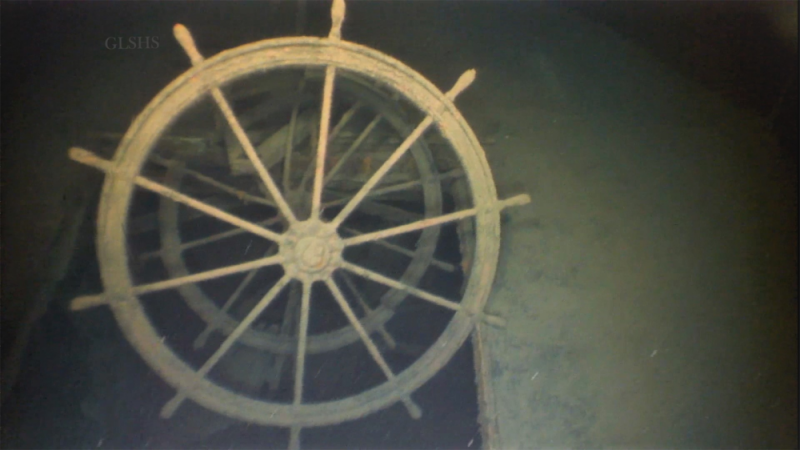Shipwreck hunters find WWII-era ship in Lake Superior

A team of shipwreck hunters have found the wreckage of a merchant ship that sank in the icy waters of Lake Superior in 1940. The 244-foot bulk carrier Arlington was discovered 600 feet deep, roughly 35 miles north of Michigan’s Keweenaw Peninsula.
[Related: Dead ships find solace under the treacherous surface of the Great Lakes.]
For the past decade, shipwreck researcher Dan Fountain has been analyzing remote sensing data in search for shipwrecks in Lake Superior. At 20,287,963 acres, Lake Superior is the largest of the five Great Lakes and the largest freshwater lake in the world by surface area. It’s estimated that there have been 500 to 600 shipwrecks in the lake since the 1850s, including the Edmund Fitzgerald in 1975.
Fountain reached out to the Great Lakes Shipwreck Historical Society (GLSHS) in Sault Ste. Marie, Michigan for help in identifying the potential Arlington wreck. In 2023, Fountain, GLSHS Director of Marine Operations Darryl Ertel, and the crew of the R/V David Boyd towed side-scan sonar over an anomaly on the bottom of the lake. The sonar detected that this shipwreck and subsequent dives with a remote operating vehicle positively identified the sunken Arlington.

“One of the most important aspects of everything we do as an organization involves the concept of teamwork,” GLSHS Executive Director Bruce Lynn said in a statement. “This goes for our operations at Whitefish Point, as well as on the water aboard the David Boyd. We are lucky to have so many dedicated shipwreck historians and researchers as friends of GLSHS.”
What happened to the Arlington?
According to the GLSHS, the Arlington left Port Arthur, Ontario on April 30, 1940. It was fully loaded with wheat and headed east towards Owen Sound, Ontario. The ship was under the command of an experienced Great Lakes sailor, Captain Frederick “Tatey Bug” Burke.
[Related: Storm erosion brings 200-year-old shipwreck to the surface of a Florida beach.]
As the Arlington and another large freighter named the Collingwood began to make their way across Lake Superior, they encountered a dense fog and storm. The Arlington began to take on water after nightfall and the ship’s first mate changed the course so that the ship hugged the Canadian shoreline. This would have given the vessel some cover from the waves and the winds. However, Captain Burke ordered his ship back onto track across the open lake. The ship began to sink early in the morning on May 1, 1940 and Chief Engineer Fred Gilbert, sounded the alarm when the Arlington began to sink.

“Out of fear for their lives, and without orders from Captain Burke, the crew began to abandon ship on their own,” GLSHS wrote in a statement. “Luckily, everyone safely got off the Arlington and made it to the safety of the Collingwood…everyone but Captain ‘Tatey Bug’ Burke.”
After the sinking, an investigation and speculation into Captain Burke’s behavior, particularly why he decided to go down with the ship. An answer to those questions of why was never uncovered, but finding the wreckage provides a new chapter in this story.
“It’s exciting to solve just one more of Lake Superior’s many mysteries finding Arlington so far out in the lake,” said Fountain. “I hope this final chapter in her story can provide some measure of closure to the family of Captain Burke.”










